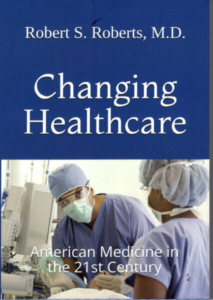The long-awaited plan of Joe Biden to solve our Covid-19 pandemic is finally over. In his acceptance speech for the Democratic presidential nomination he revealed his plan – it’s what Trump is already doing!
Despite months of criticism of Trump’s handling of the virus by Biden and every other Democratic leader, they couldn’t come up with anything better. The Wall Street Journal editorial board says, “The Democratic nominee is also promising a better virus strategy, which would be wonderful if he had one. But the virus plan he’s pushing is little different on the substance than what the Trump Administration is already doing.”
Let’s look at each step in the Biden Covid-19 plan:
- Virus Testing– Biden promises to “develop and deploy rapid tests with results available immediately.” The Food and Drug Administration (FDA) in the past week has approved two new rapid tests that can be scaled up quickly. After an initial delay in testing caused by errors at the Centers for Disease Control and Prevention (CDC) and FDA, supply-chain delays have been worked out. The U.S. is now conducting 700,000 tests or more per day, up from 400,000 in early June and 100,000 in late March. The cheap saliva tests developed by Yale researchers will avoid chemical reagent shortages and can cost as little as $10.
- More PPE, Test kits, and Lab supplies – Biden is calling for “a coordinated, country-wide, future-facing national effort to acquire, produce, and distribute PPE, test kits, and machines, lab supplies, and other critical supplies, including by fully utilizing the authorities” under the Defense Production Act. The Trump Administration is already doing all of this. In the hospital and surgery center where I work, there has never been a shortage of these supplies.
The Trump administration has effectively used public-private partnerships to rally the “arsenal of democracy” (the private sector) to produce the needed supplies for this pandemic. The Pentagon this spring issued $259 million in contracts to 3M, Honeywell, and Owens & Minor to produce tens of millions of N95 face masks for medical workers. U.S. companies like GM and New Balance have retrofitted plants to produce ventilators and PPE, and the Administration has used the Defense Production Act to allocate more tests and protective equipment to hot spots.
- Hire Federal Contact Workers – Biden has called for hiring 100,000 federal workers to track down contacts of people who get sick. States are already doing this, though public health officials say contact tracing is of little use when the virus is widespread in communities.California tried this approach this summer, training 10,000 contact tracers. But the Sacramento Bee last month reported most never were assigned work for inexplicable reasons.
- Increase vaccine production – Biden promises to “ramp up the large-scale manufacturing of as many vaccine candidates as necessary.” I guess he hasn’t been listening to the news from his Delaware basement. The Trump Administration and private industry are already on that. (see Vaccine Progress Due to Planning)
Health and Human Services this spring issued a $628 million contract to Emergent BioSolutions, a private firm, to coordinate with vaccine developers ramping up manufacturing capacity. The Administration has contracted with Johnson & Johnson, Pfizer, BioNTech, Moderna, and AstraZeneca for hundreds of millions of dosages as soon as their vaccines are proven safe and effective in trials. Pfizer and BioNTeach recently announced their vaccine is on track to seek regulatory approval as early as October.
The National Institutes of Health (NIH) is also funding promising treatments. Last month the Trump Administration signed a contract with Regeneron to manufacture 300,000 doses of its antibody cocktail by the end of the summer. On the other hand, Biden has proposed price controls and threats of prosecution of health-care executives. These measures would surely dampen the incentive to develop therapies and vaccines as soon as possible.
- Money for Schools to Reopen – Biden says he’ll give schools “the resources they need to be open, safe, and effective.” President Trump has said the same thing – if they reopen. Biden’s support for teachers unions threatens the ability of schools to reopen regardless of the federal financial support.
- National Mask Mandate – Biden also says he’ll impose a national mask mandate. Trump has encouraged masks in public, but left the decision up to the state governors. The Constitution doesn’t give the federal government the authority to mandate masks on a national level. That authority is left to the states.
There you have it, the Biden plan revealed. If you were looking for something exciting and different, you will be very disappointed. The Trump Administration is already way ahead of Biden and has implemented everything in his plan – except a national mask mandate. I guess Uncle Joe isn’t familiar with the Constitution.

